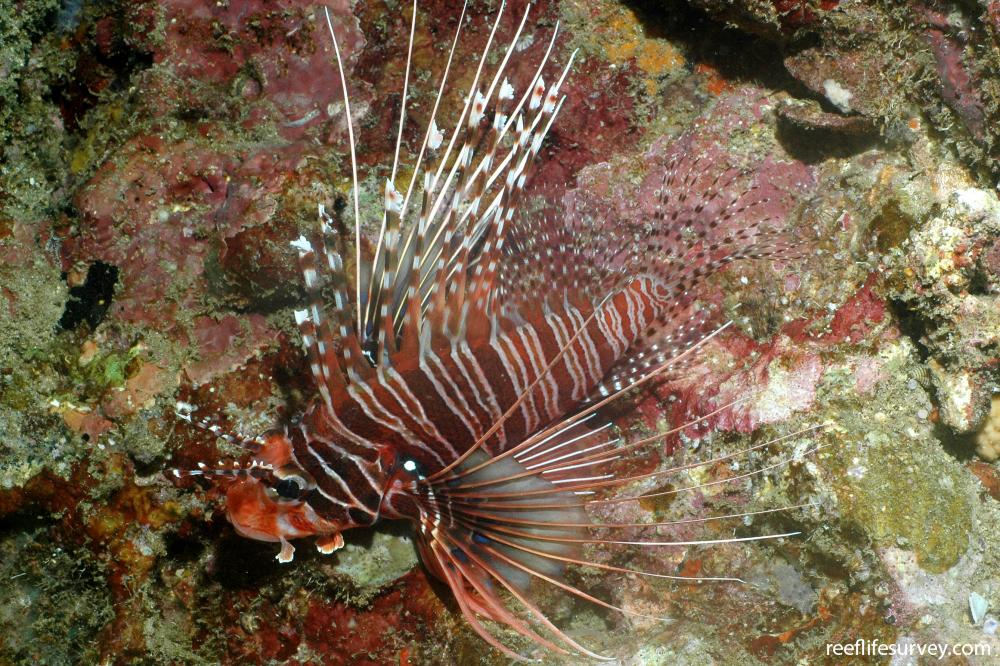Pterois antennata
Spotfin Lionfish | Banded Lionfish | Broadbarred Lionfish | Ragged-finned FirefishSimilar Species
Same Genus
Distribution
Tropical Indo-Pacific
Description
Long, white extended pectoral fin rays with large spots in between, near the base of the pectoral fin. Distinct tasselled antennae above each eye. Spots on tail and rear fins, but distinguished from Dendrochirus zebra (Zebra Lionfish) by having pectoral spots and lacking white spots on tail base. Distinguished from P. volitans (Common Lionfish) by lacking flag-like membranes on extended pectoral fin rays.
Information
Max Size: 20 cm
Sea Temperature Range: 22.4-31.7°C
Depth: 1-86m
Habitat Generalization Index: 4.9
Also referred to as the SGI (Species Generalisation Index), this describes the habitat niche breadth of the species. Species with values less than 15 are found in a relatively narrow range of reef habitat types (specialists), while those over 25 may be found on most hard substrates within their range (generalists). Learn more here.
Conservation and Rarity
IUCN Status: Not Evaluated
Occurrence: Infrequent (5.0% of sites)
Occurrence describes how often the species is found on surveys within its distribution. It is calculated as the % of reef sites surveyed by RLS divers across all the ecoregions in which the species has been observed
Abundance: Solitary (1 per transect)
Abundance is calculated as the average number of individuals recorded per RLS transect, where present.
Edit by: RD Stuart-Smith, GJ Edgar, AJ Green, IV Shaw. 2015. Tropical Marine Fishes of Australia. Reed New Holland













